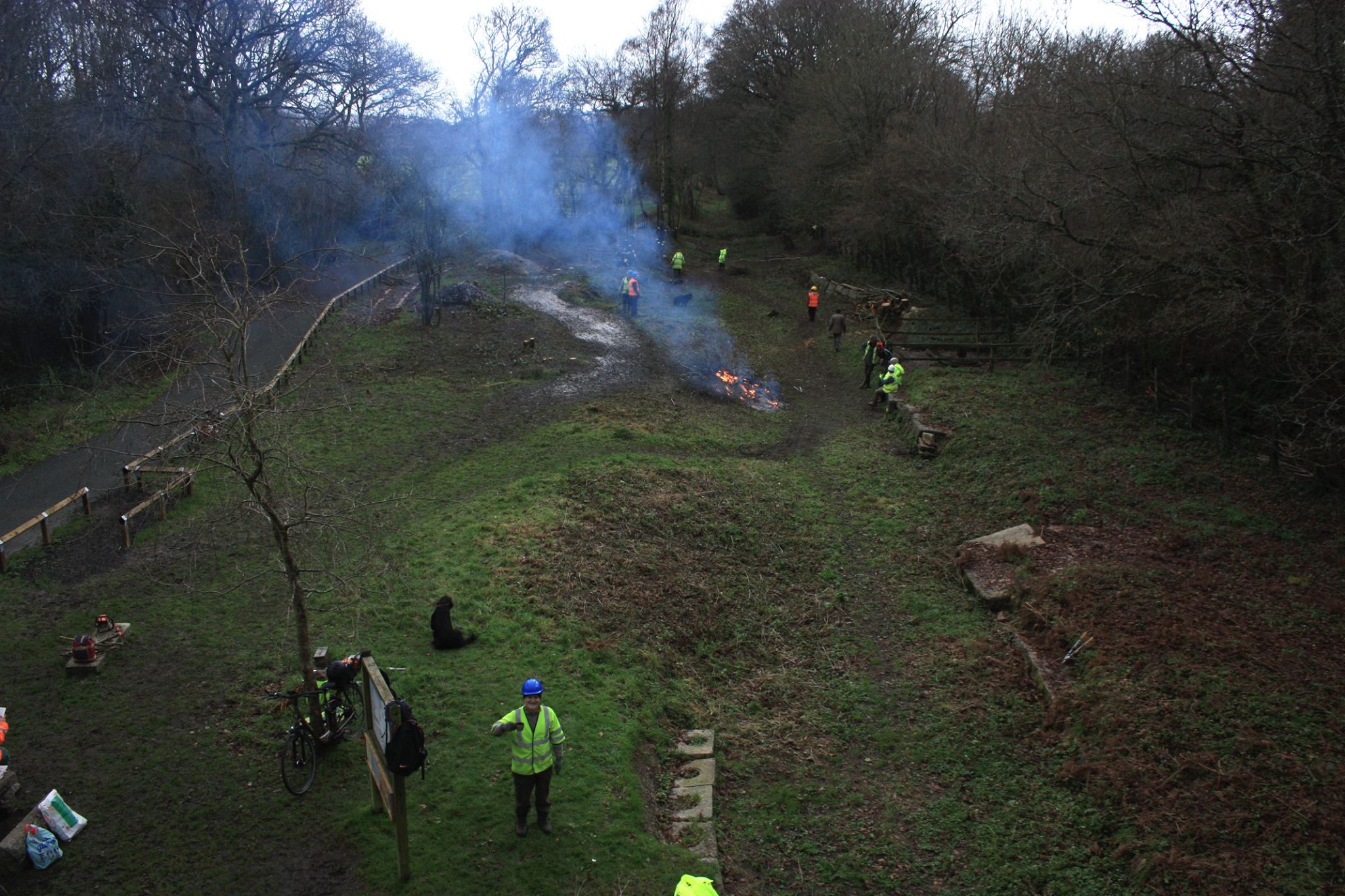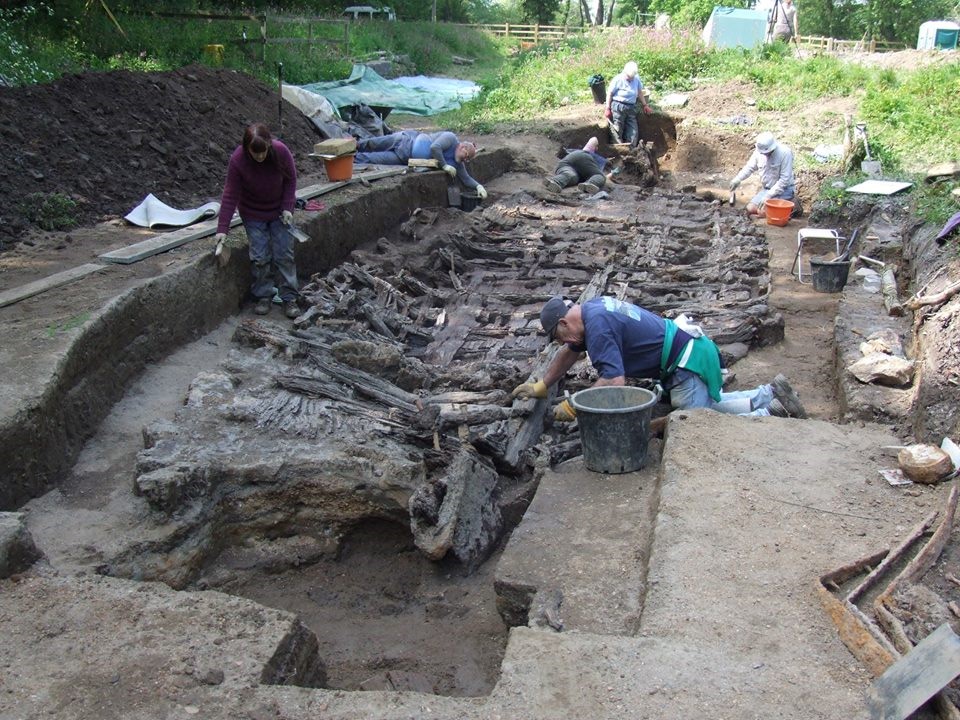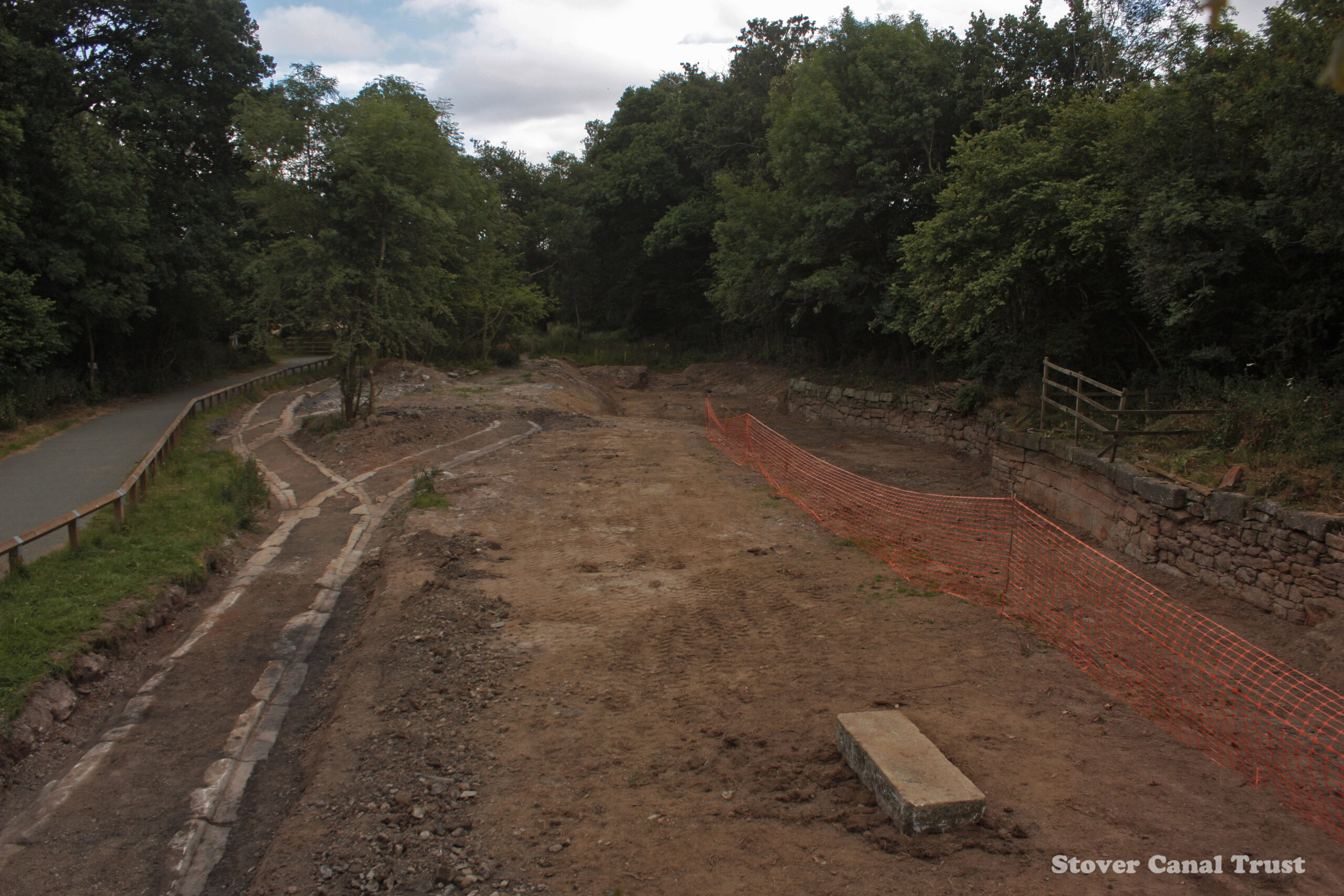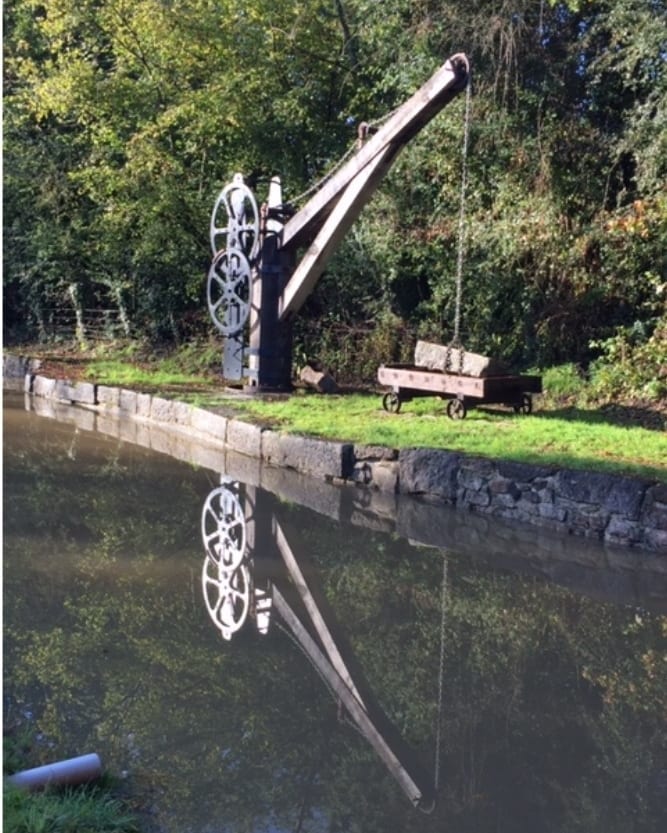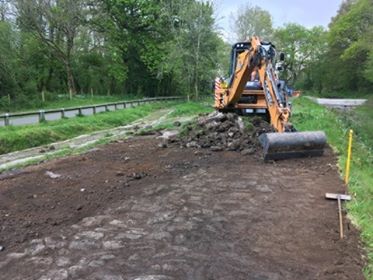Ventiford Basin
The Northern terminus of the Canal
Following the opening of the Moretonhampstead and South Devon Railway in 1866, canal traffic gradually declined and the Ventiford Basin subsequently became redundant and steadily fell into disrepair. Flooding by the adjacent River Teign over the decades left layers of silt which gradually built up and buried all evidence of the canal and tramway. For two weeks in 2014, the excavation started of an old barge which had been laid-up in the basin when it became redundant in the late 1800’s. Granite walls to the basin were also uncovered. Later that year, whilst work was being carried out by Devon County Council on the construction of the Stover Trail cycle and walkway, evidence of the Granite Tramway was uncovered. A further two week excavation continued in 2015. It was becoming evident that the open grassed area that was ‘Ventiford’ held many surprises in store. Restoration work was greatly helped in the early Summer of 2016 by the involvement of the management and some of the staff of the local clay company, Sibelco. Hundreds of tonnes of silt were removed from the canal channel and more hulked barges and granite ‘rails’ were found
Permissions were received to re-water the canal basin by building a small, clay-cored dam with overspill, and to create a replica crane on the Western quayside. Further excavation on the Eastern side revealed the original working surface of the basin area. This has been preserved as a picnic area for visitors.

